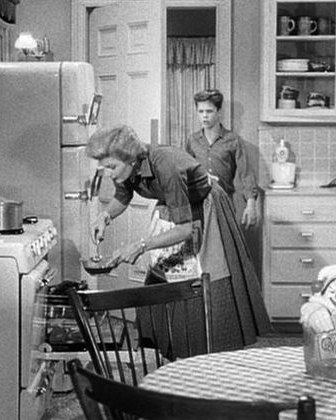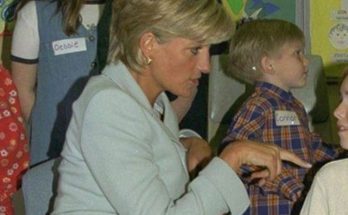Through the endearing escapades of the Cleaver family, the popular comedy Leave It to Beaver taught timeless truths while capturing the spirit of American family life in the 1950s and early 1960s. Even the most devoted viewers might have missed the show’s oddities, gaffes, and humorous blunders, despite the near-perfect image it presented. Let’s examine some of the humorous behind-the-scenes stories and obscure details that give this beloved TV show even
more allure.

Have You Noticed These Errors in “Leave It to Beaver”? The majority of fans didn’t!
Creating a New Paradigm for Healthful Entertainment

It wasn’t just another family sitcom, Leave It to Beaver. It established the standard for good entertainment that emphasized moral principles and pleasant comedy while concentrating on the Cleaver family’s daily struggles. In contrast to modern television, which frequently veers toward intricate plots or edgy humor, Leave It to Beaver offered an idealized family that viewers might aspire to. The program, which ran from 1957 to 1963, took viewers to the made-up village of Mayfield, where everything appeared easier and more kind.
However, even this “perfect” series had its share of humorous on-screen gaffes and mistakes that gave its otherwise flawless appearance a more relatable feel. Let’s examine a few of these enjoyable occasions.
The Calendar of June Cleaver—An Unexpected Error
June Cleaver, played by Barbara Billingsley, was the ideal mother: she was modest, calm, and always orderly. However, astute fans have noticed a small detail that was overlooked. The wall calendar of the Cleaver family was frequently outdated! For example, the calendar in the 1963 episode The Poor Loser showed the incorrect year, indicating that the prop may have been a repurposed item from previous episodes.
Fans found amusement at this minor error, which served as a reminder that even the Cleavers’ spotless household was not perfect. Additionally, viewers found that noticing these infrequent flaws gave an otherwise flawlessly manufactured family life a humorous twist.
Mayfied or Mayfield: The Misspelled Baseball Tickets?
Another minor error was overlooked by the production crew in the same program that included the calendar incident. As Ward and Beaver get ready to go to a baseball game, a close-up of their tickets shows a minor but noticeable spelling mistake. The town’s name, “Mayfield,” is spelled correctly in large font, yet it appears as “Mayfied” in smaller size.
This may not seem like much, but it’s one of those odd errors that viewers like to point out, which makes them value the human aspect of the show even more. Bloopers like these give the series a more authentic sense, as though the Cleavers themselves could exist in our flawed society.
The Fake Bee in The Silent Treatment

Because television special effects were so primitive in the 1950s, the Leave It to Beaver cast had to come up with amusing methods to be creative. While painting a door in the episode The Silent Treatment, Beaver has a comical run-in with a buzzing bee. The crew decided to use a plastic bee hanging on a string instead of a live bee.
If you look closely, you can see the string bobbling close to Beaver’s face! Despite its lack of realism by today’s standards, this inexpensive prop gave the scene a whimsical touch while demonstrating the production team’s inventiveness.
Jerry Mathers’ Audition—The Reluctant Cub Scout
Jerry Mathers’s journey to play Theodore “Beaver” Cleaver is nearly as endearing as the character itself. Mathers showed up for his audition wearing his Cub Scout outfit, intending to go to a scouting event afterwards. His primary goal was to complete the audition in time for his Cub Scout meeting, not to impress the producers.
The show’s writers, Joe Connolly and Bob Mosher, were drawn to Mathers’ straightforward, unvarnished attitude and thought he was the ideal match for Beaver’s relatability and innocence. Mathers’ audition narrative has become famous in Leave It to Beaver history, despite the fact that he had little time for scouting after landing the role because of his hectic production schedule.


